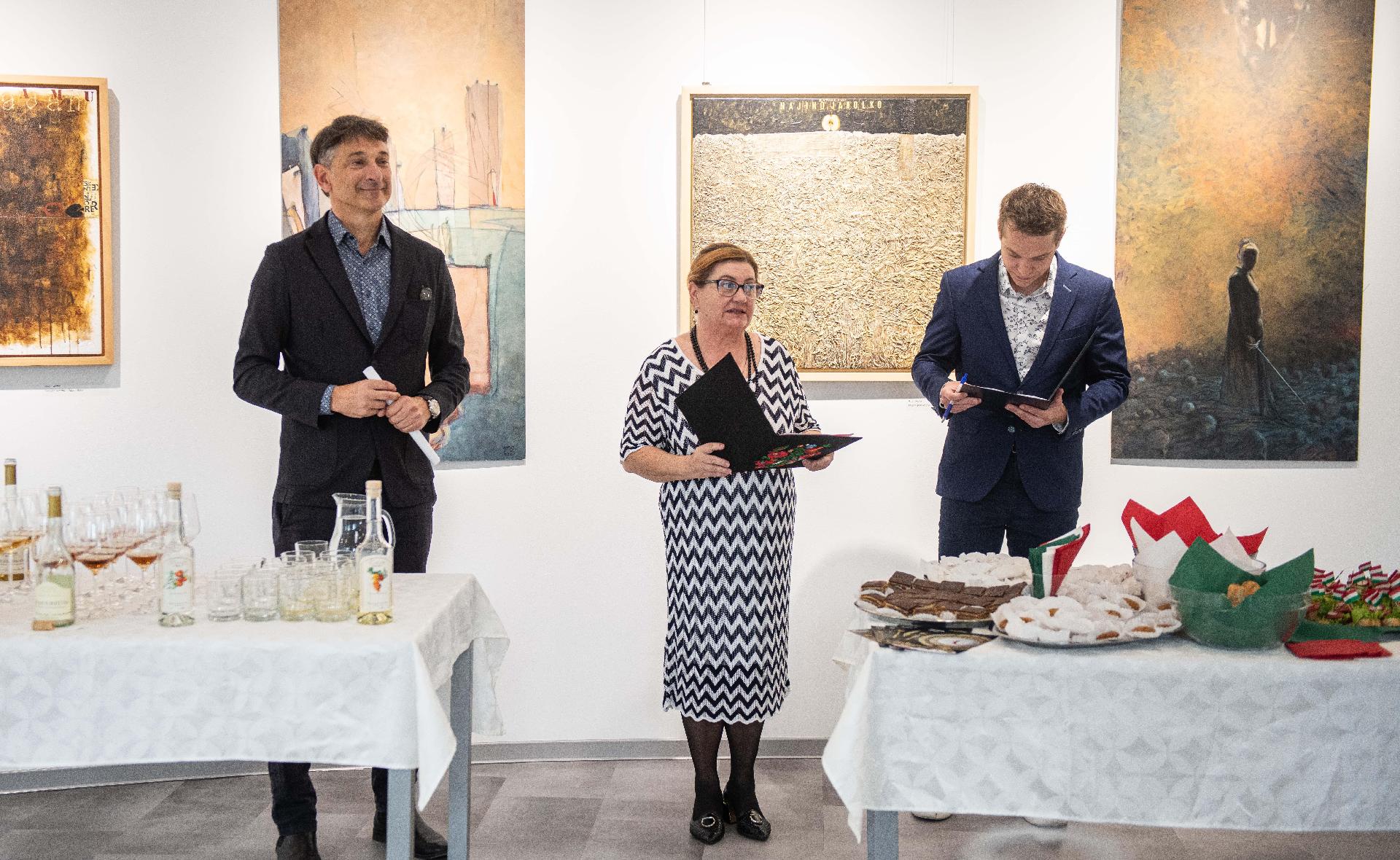
2nd Liszt Cultural Days in Ljubljana Concluded with Great Success
Between May 19 and 23, the Liszt Institute Ljubljana successfully organized the Liszt Cultural Days for the second time, which is one of the year’s largest events. This major event aimed to introduce Slovenian audiences to Hungarian culture, art, and gastronomy. The program featured exhibition openings, the launch of a literary-tourism website, and gastronomic presentations. The highlight of the week was the "Lisztomania" Hungarian street festival held on May 23 on Barvarska steza, the small street next to the Liszt Institute. Alongside producers and artisans from Hungary and the Muravidék region, the large crowd was also entertained by puppet shows, Hungarian folk music, dance performances, a DJ, a concert, and a selection of Hungarian food and drinks. The event garnered significant public and media attention.
On May 19, a new website was introduced to the public, presenting Slovenia through Hungarian eyes. Users can find a list of Hungarian heritage sites located in Slovenia on the brand-new website, featuring special 360-degree images. The list can be filtered by various criteria, users can even create their own itineraries or "bucket lists." When visiting a specific location, scanning the area brings the user's surroundings to life. The past is reanimated through historical sources, educational texts compiled by experts, image and audio materials from the period related to the site. The user experience is further enhanced by collectible badges, coins, trophies, and stickers. Beyond the website presentation, a virtual "literary tour" combined with a quiz also awaited attendees. This tour was led by Gabriella Kiss, former Hungarian lecturer in Zagreb, and Tamás Kruzslicz, former Hungarian lecturer in Ljubljana, who are the editors of the publication "Hungarian Literary Memorial Sites from the Alps to the Adriatic." Through the interactive quiz questions, participants explored sites in Slovenia and Croatia connected to famous Hungarians, primarily writers and poets. The Liszt Institute initiated the website's development, which took approximately three years to complete with the involvement of several historians. The project was realized with the support of the National Cultural Fund of Hungary (NKA). The website is available at: https://360city.hu/outdoor/lisztintezet/
On May 20, the festival hosted the opening of "From the Garden of Eden to the Way of the Cross," an exhibition featuring works by Rudi Škočir and Ottó Szabó. This exhibition explores a complete Christian-cultural arc, from the state of innocence to the symbolism of Christ's suffering and redemption. This collaborative exhibition not only brought together two prominent artists, fostering dialogue between them, but it also introduced the work of the Hungarian artist, Ottó Szabó, to many Slovenian visitors through the highly acclaimed Slovenian artist, Rudi Škočir.
On May 22, an exhibition titled "Hungarikums Around the World" opened at the Liszt Institute Ljubljana. Organized in collaboration with the team of the Hungarikum Program Office Nonprofit Ltd., the exhibition offers visitors a chance to see unique relics and objects such as Egri Bikavér, Tokaji Aszú, pálinka, winter salami, Csabai sausage, Pozsonyi kifli, the Puskás football, Zsolnay porcelain, and a Hollóháza chess set.
The Liszt Cultural Days culminated on Friday, May 23, with Lisztomania, a Hungarian street festival showcasing Hungary's rich cultural and culinary heritage. Besides producers and artisans from Hungary and the Muravidék region, attendees could also enjoy puppet shows, Hungarian folk music, dance performances, a DJ, a concert, and, of course, Hungarian food and drinks. As part of the program, the KU-KUC Puppet Theatre from the Muravidék region performed a Hungarian folk tale in Slovenian. Adam Klemm, a jazz musician of Hungarian descent from Vojvodina, and his band also took the stage. In the afternoon, visitors enjoyed Hungarian folk dance and a lively fair atmosphere. The local Hungarian community, represented by the Attila József Hungarian Cultural Association, also participated in the event. Throughout the street festival, music, food, and drinks ensured a great atmosphere, which concluded in the evening with a party by DJ Badger that also got the local youth dancing. Various stalls at the fair showcased Hungarian food, drinks, and handmade products. Visitors had the chance to taste lángos, which proved to be a big success among the local audience. Additionally, attendees could sample Hungarian wines from Muravidék producers, Hungarian pastries, Muravidék honey, and draft beers from Mad Scientist craft brewery from Budapest. The Liszt Institute's stand provided visitors with information about the Institute's work and Hungary's cultural treasures.
The event garnered significant public and media attention.
